Endodontic Treatment
Endodontic Treatment
Who performs endodontic procedures?
Although general dentists can carry out endodontic treatments in addition to general dental treatments, they usually refer patients who need endodontic procedures to Endodontists.
General dentists can handle only basic endodontic procedures because of the basic endodontic training they got in dental school. However, they recognize the need for endodontists to handle endodontic treatments, because apart from the basic endodontic course done in dental school, endodontists undergo a further two-year specialist training after dental school. Only accredited endodontic institutions can offer this training. Endodontists concentrate only on endodontic conditions so they have more knowledge about the latest innovations and methods in the field, more than other dentists do. They are capable of handling both basic and complicated endodontic surgeries. Endodontists are capable of diagnosing difficult oral and facial conditions.
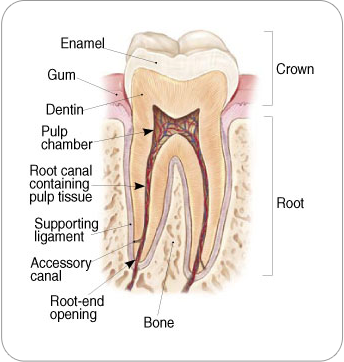
What is endodontic treatment?
Endodontic is a word derived from two Greek words (Endo – inside) and (odont – tooth). Therefore, endodontic treatment is the treatment of the inside of a tooth.
Before you can fully understand the features of an endodontic treatment, you should first have an overview of the anatomy of a tooth. There is a soft tissue deep inside the tooth known as pulp. This pulp is located beneath the enamel (white outer covering of a tooth), and the dentin (hard layer beneath the enamel). All the nerves, blood vessels, and connective tissues in a tooth are located within the pulp. During tooth development, the pulp also produces the hard tissues of the tooth.
The pulp is a very important part of the tooth and plays a significant role when the tooth is still growing and developing. It provides support to the growing tooth, until the tooth has completely matured enough to draw nutrition from the surrounding tissues without depending on the pulp. The pulp occupies the region of the crown of the tooth to the root ends, where it merges with the surrounding tissues of the root.
In what ways can endodontic treatment save a tooth?
Once there is an infection in the pulp, repair becomes impossible. The aim now is to save the tooth itself. Your Endodontist will have to evacuate the damaged pulp from inside the tooth, and then meticulously clean the pulp cavity before filling it up with a sealant. You will then need to go back to your dentist to have a dental crown fixed over the tooth for protection. With this protective restoration, the tooth will regain its normal functions.

Will it hurt during or after the treatment?
Endodontic treatments help ease toothache pain caused by pulp damage. The modern processes available for endodontic treatments have made most patients comfortable during the procedure. If pulp damage was because of an infection, you may experience tooth sensitivity, which you can use some pain-relievers to ease. Make sure you obey all the rules stipulated by your endodontist in your post-operation guidelines.
Endodontic treatment is a gradual process. During the healing process, you may feel some awkwardness in that particular tooth. It may sometimes feel different from the rest of your teeth. Do not be alarmed because this is normal. You only need to be concerned if during the healing, you have an extended period of pain. Urgently contact your Endodontist in such situations.
What will I benefit from an endodontic procedure?
The reason for an endodontic procedure is to address an abnormal condition of the pulp. The main sign of a troubled pulp is pain/inflammation. This is a sure sign that the pulp is infected. Some factors such as tooth chip/crack, extensive decay, and frequent dental interventions, etc, can cause pulp infection. Pulp damage is also possible if there is a knock on the tooth. The tooth may not have any surface damage from the knock but the impact may affect the pulp.
Untreated pulp infection or inflammation can result in the formation of abscess or severe pain. Pulp damage often comes without any symptoms. By the time the effect is visible, some damage had already occurred. In addition to pain, other signs of pulp damage include swollen and tender gums, extended sensitivity to extreme temperatures (hot and cold drinks/food), and tooth discoloration.
Endodontic Procedure
Depending on the severity of the case, one or two visits are usually sufficient for an endodontic procedure. The steps used for the procedure is as follows.
First, there will be some x-rays and tests on the tooth. The endodontist will apply local anesthesia to numb the tooth, and then place a dental dam (protective covering) over the region to keep the tooth free from contact with saliva during the treatment.
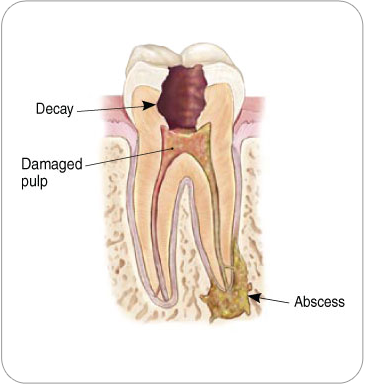
The second step is for the endodontist to make a tiny hole on the tooth crown, and with the help of tiny instruments, evacuates and cleans out the infected pulp through the hole. The endodontist will then shape the empty pulp cavity in readiness for filling with a sealant.
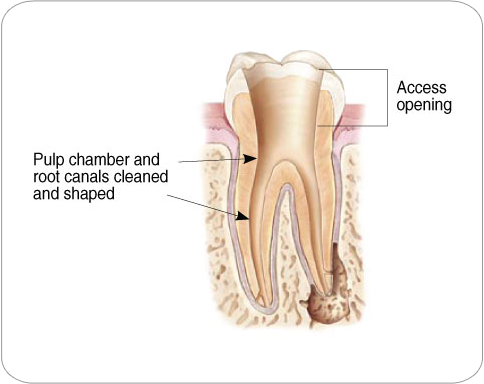
Once the pulp chamber is ready for the sealant, the endodontist will use a rubber-like bio-friendly material known as gutta-percha to seal the root canals. The gutta-percha combines with a cementing material in order to achieve a complete sealing of the root canals. The endodontist will then seal the hole with a protective temporary sealant, which the dentist will remove prior to restoring the tooth.

The next step is to go back to your dentist to fix a dental crown on the tooth for restoration and full protection.
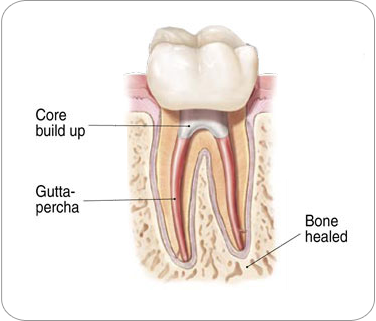
If your tooth is too weak to support the crown/restoration, your endodontist or dentist may insert a splint within the tooth to provide the needed structural strength. You can get detailed information about the type of restoration you will be getting from your endodontist.
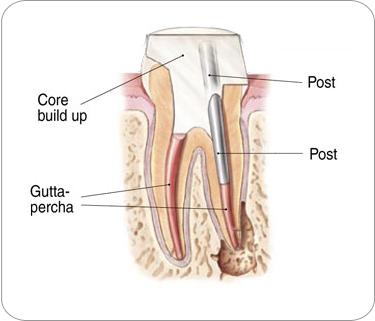
Will I expect any further treatment, or observe any special care for the tooth?
After you have finished with the Endodontist, just before you visit your dentist for restoration, you should be aware that the treated tooth is still fragile. At this stage, it can break with the slightest pressure. Therefore, you must resist the urge to bite or chew with the tooth until your dentist carries out a full restoration. You must not delay this visit to the dentist. Apart from this precaution, you only need to maintain good oral hygiene by flossing, brushing, cleaning, and going for regular checkups.
There is a certainty that most teeth that have had endodontic treatments last as long as other natural untreated teeth. In rare cases, however, pain may persist, or the tooth may fail to heal even after an endodontic procedure. In other cases, another round of infection may occur months/years after the first successful procedure. In situations like this, the best option is to undergo another treatment in order to save the tooth.
Dentkos Endodontics
16626 Pearl Rd
Strongsville, OH 44136
Contact
Phone: (440) 268-8445
Fax: 440 268 8443
Email: [email protected]


